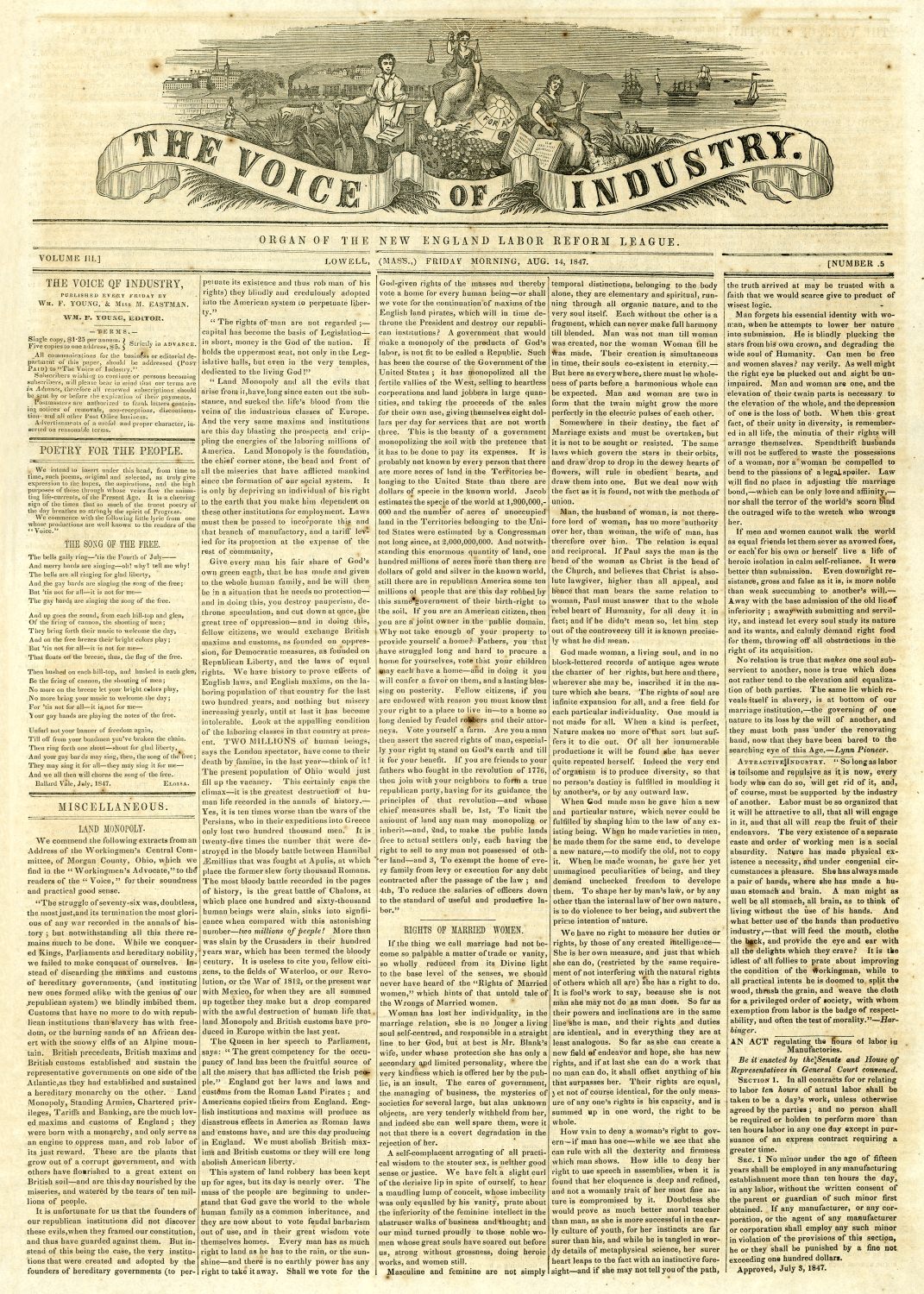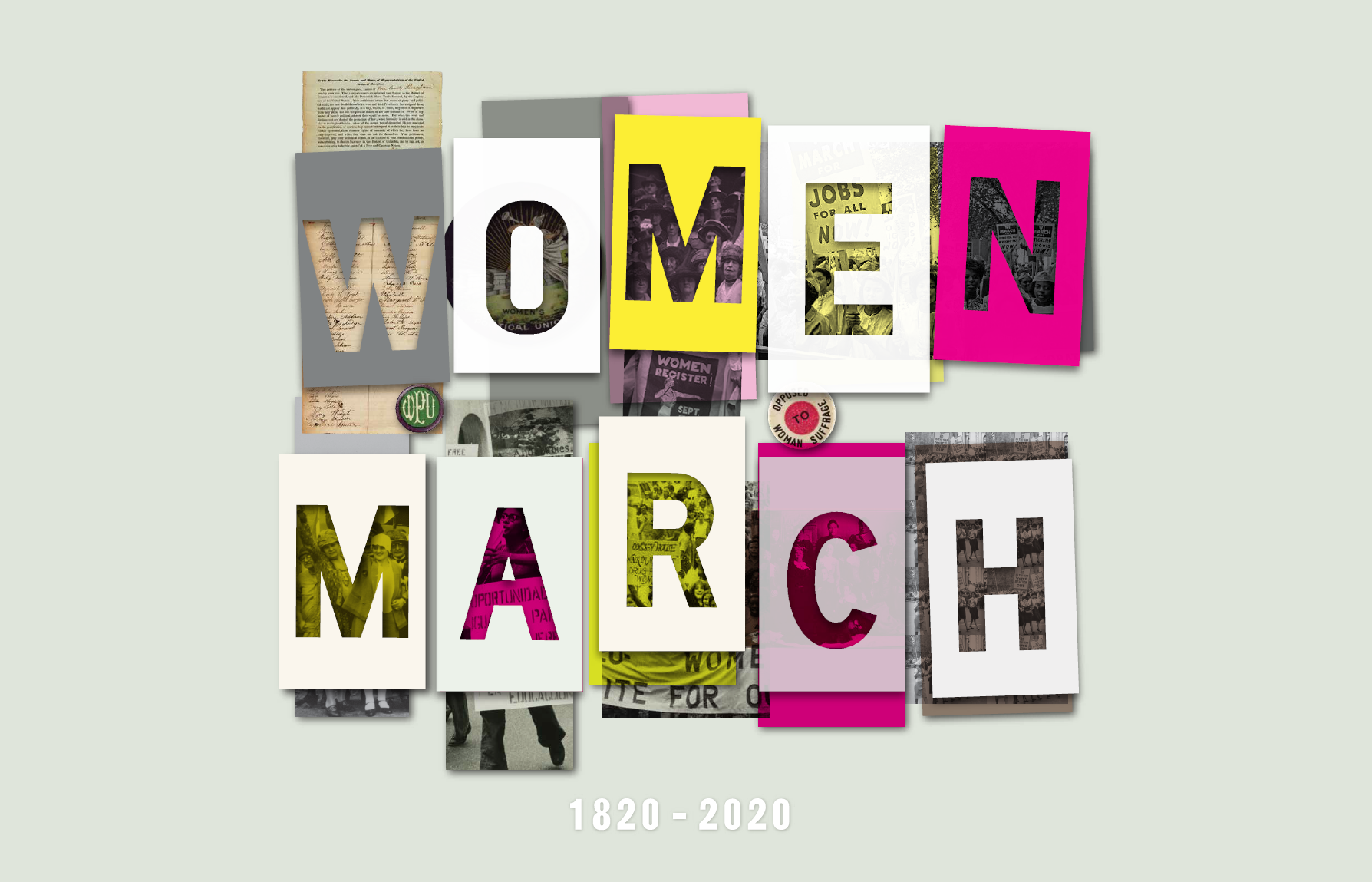
click for 360 tour
“Our Souls
Have Caught the Flame”
- Maria W. Stewart
One hundred years before the ratification of the 19th Amendment, American women mobilized to champion social reform through long-standing traditions of mutual aid, benevolence, and charity. At a time of profound political, social, and economic change, women—without benefit of the vote—claimed a role in the success, stability, and survival of the nation. Fueled by the religious fervor of the Second Great Awakening, Black and white women founded hundreds of voluntary organizations, ranging in focus from local antipoverty programs to labor reform to a nationwide campaign against slavery. Yet lack of political power constrained women’s ability to affect change. By 1848, attendees at a women’s rights convention in Seneca Falls, NY declared their intention to seek equality and full citizenship in every aspect of their lives—including the vote.
“Shake the tree of liberty”
-Sarah Forten
Free Black women were crucial to the anti-slavery movement. Close-knit networks of church, kin, and friends helped them circulate abolitionist ideas throughout the US. In large cities and small towns, they raised money, formed literary societies, published in journals, established mutual aid associations, supported the national Colored Convention movement, and took active roles in anti-slavery organizations. Many of Philadelphia’s prominent free Black women were members of both the African Episcopal Church of St. Thomas and the Philadelphia Female Anti-Slavery Society, notable for electing Black and white officers. In 1832, Maria W. Stewart became the first American-born woman to lecture publicly to mixed audiences on political themes of emancipation, racial prejudice, and women’s rights. Later, other African American women, including Sarah Mapps Douglass, Sarah Parker Remond, Sojourner Truth, and Frances Watkins Harper, also became sought-after orators, calling for women’s empowerment and an end to slavery.
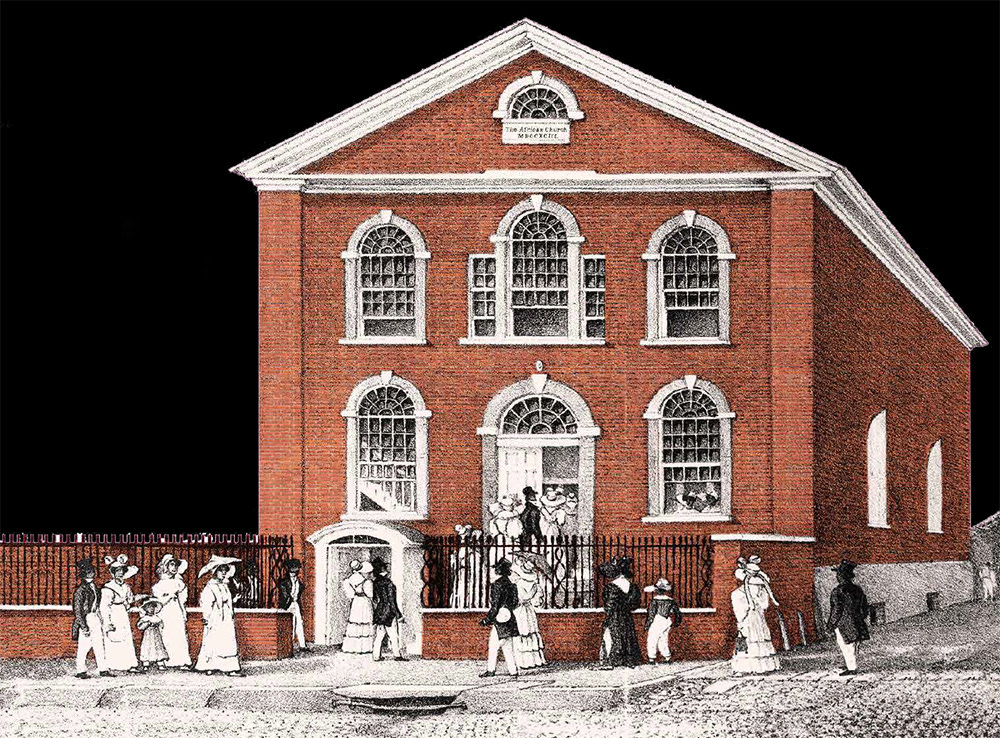
William L. Breton
A
Sunday morning view of the African Episcopal Church of St. Thomas in Philadelphia, 1829
Historical Society of Pennsylvania
“In the habit of slavery are concentrated the strongest evils of human nature”
-Lydia Maria Child
Abolitionist publications, including Frederick Douglass’s North Star, William Lloyd Garrison’s The Liberator, Maria Weston Chapman’s Liberty Bell, and even a children’s alphabet described the sexual assault of enslaved women and the forced separation of their families to enlist readers’ moral opposition to slavery. Anti-slavery poems, essays, lectures, and novels by Black and white authors sought to awaken empathy towards enslaved mothers and children who were separated and sold. Many such publications were available at anti-slavery bazaars, first organized in 1834 by a group of Boston women. By the late 1850s, Black and white women in dozens of cities and towns had formed abolitionist sewing circles, solicited donations, and organized anti-slavery fairs. The funds supported publications and traveling lecturers, assisted fugitive slaves, and endowed schools for African American children. Such volunteer work advanced women’s skills in leadership, organizing, lobbying, and fundraising that they soon would translate into the political arena.
Animated
graphic treatment of Declaration of
Sentiments
(selected text)
Harriet Beecher Stowe
Uncle Tom’s Cabin; or, Life Among
the Lowly
Boston: John P. Jewett & Co.,
1853
Patricia D. Klingenstein Library,
New-York Historical Society
Between 1820 and 1860, the US experienced a great
surge in literacy. Among an expanding market for magazines, tracts, newspapers,
and books, Uncle Tom’s Cabin stands
out for its unprecedented success. First published in 1852, it sold 300,000
copies within a year (and has never gone out of print). Like many antislavery
authors, Harriet Beecher Stowe used religious appeals and sentimental language
to evoke sympathy for the enslaved characters and persuade readers to join the
abolitionist cause.
Julia Griffiths, editor
Autographs for Freedom, second series
Rochester, NY: Rochester Ladies’
Anti-Slavery Society, 1854
Patricia D. Klingenstein Library,
New-York Historical Society
After escaping from slavery in 1838, Frederick
Douglass became one of the most prominent speakers in the abolitionist
movement. He also championed women’s political rights, attending the 1848
Convention at Seneca Falls and supporting Elizabeth Cady Stanton’s
controversial call for suffrage. Douglass later wrote, “The benefits accruing
from this movement for the equal rights of woman are not confined or limited to
woman only. They will be shared by every effort to promote the progress and
welfare of mankind everywhere and in all ages.”
William
Doerr, printer
Plea for the Slave II
New York: The American
Anti-Slavery Society, 1838
Patricia D. Klingenstein Library,
New-York Historical Society
In 1824, an Englishwoman named Elizabeth Heyrick
published an influential pamphlet calling for the immediate, rather than
gradual, abolition of slavery. When the American Anti-Slavery Society was
founded in 1833, this still-radical call for immediate emancipation was
incorporated into its constitution. By 1840, the organization had 2000 auxiliary
societies, over 150,000 members, and distributed over three million pieces of
literature.
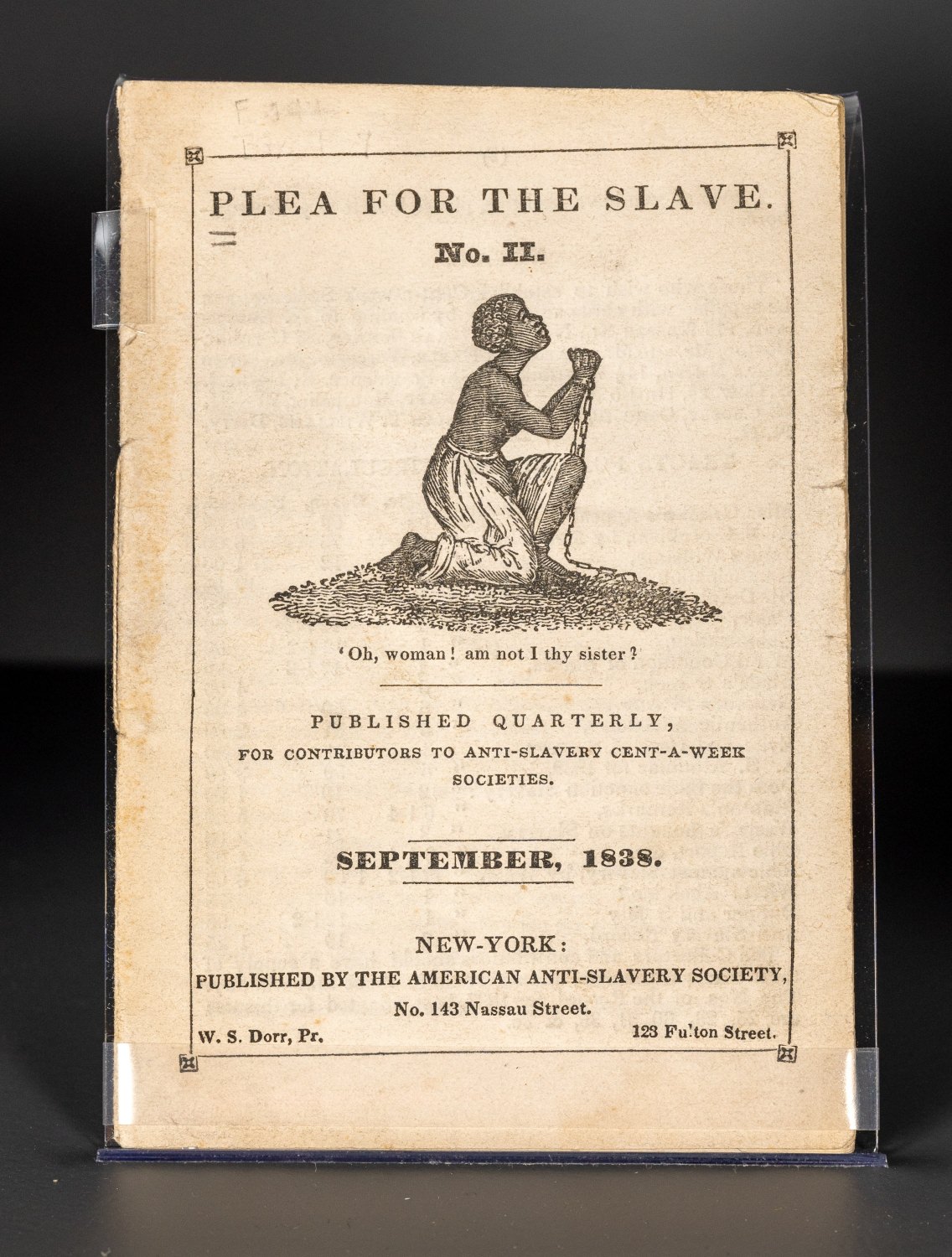
Hannah
Townsend and Mary Townsend
The Anti-Slavery Alphabet
Philadelphia: Printed for the
Anti-Slavery Fair, 1847
Patricia D. Klingenstein Library,
New-York Historical Society
Attributed to two Quaker sisters, this alphabet
book was printed for sale at the 1847 Philadelphia Anti-Slavery Fair.
The
authors concluded with a poem addressed “To Our Little Readers,” calling on
children to boycott sugar and sweets produced by enslaved laborers.
Lydia M. Child, editor
The American Anti-Slavery Almanac
for 1843
New York: The American
Anti-Slavery Society, 1842
Patricia D. Klingenstein Library,
New-York Historical Society
Lydia Maria Child was both a bestselling author and
an outspoken abolitionist. Like William Lloyd Garrison, Child advocated for
immediate and uncompensated emancipation. She also presented a forceful
argument against colonization - a proposal that all free Black Americans should
be sent to western Africa, regardless of their birthplace.
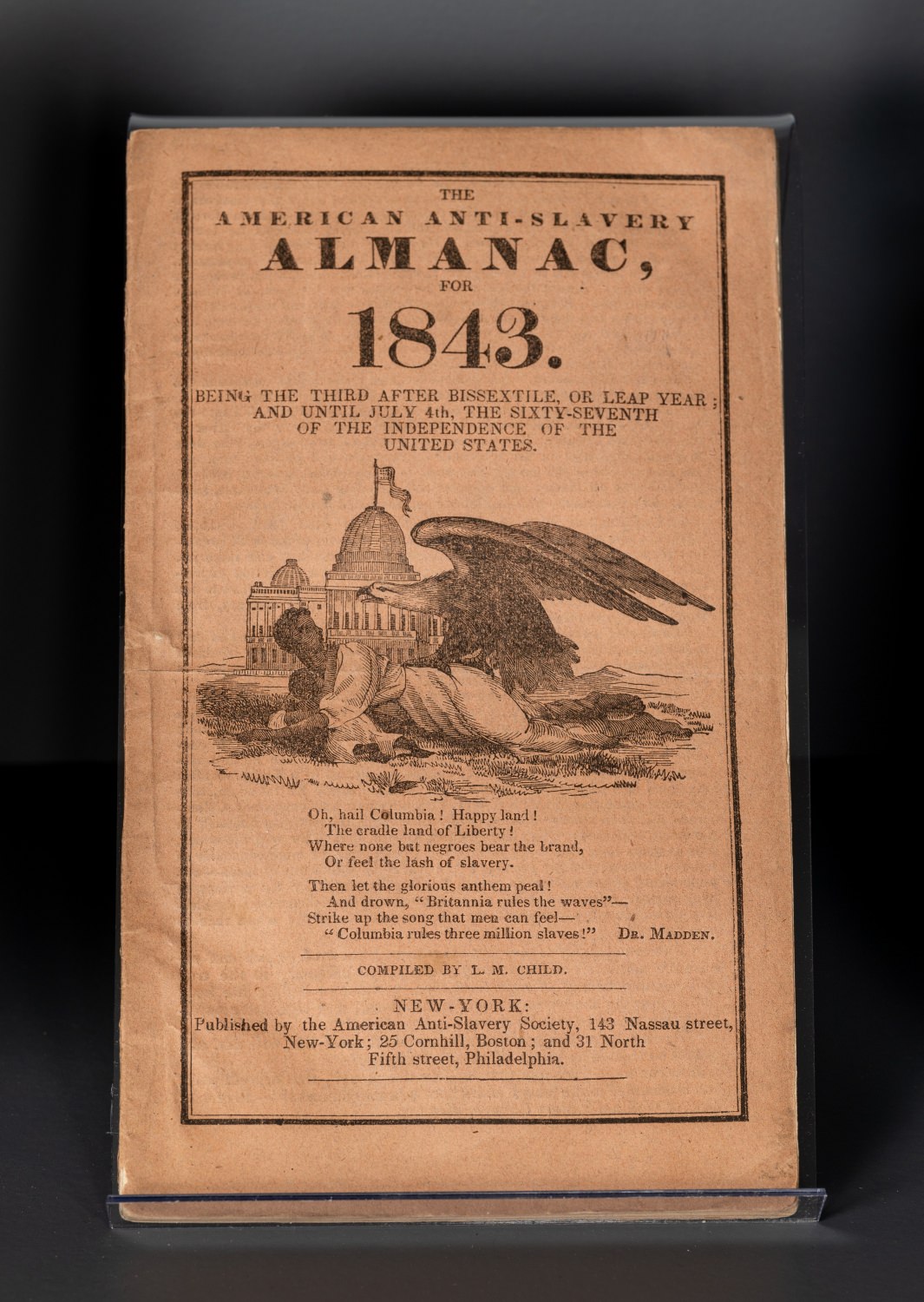
Olive Gilbert
Narrative of Sojourner Truth
Boston: Printed for the author, 1850
Patricia D. Klingenstein Library, New-York Historical Society
A young woman born into slavery in New York around 1797 was given the name Isabella;
however, in 1843, having escaped from slavery and undergone a powerful religious
experience, she claimed the name Sojourner Truth. Although she never learned to read or
write, Truth became a riveting public speaker. She supported herself by lecturing on
abolitionism and women’s rights, and selling copies of her autobiography, dictated to Olive
Gilbert.
“Her character becomes unnatural”
-The Pastoral Letter of the General Association of Congregational Ministers of Massachusetts
Women often encountered vicious condemnation for stepping outside their socially prescribed roles as wives, mothers, and homemakers. In 1828, when Scottish-born abolitionist and reformer Fanny Wright began giving public lectures, she was called “a great Red Harlot” and mockingly compared to a goose. Maria W. Stewart gave up public speaking in 1833, saying “I have made myself contemptible in the eyes of many, that I might win some. But it has been like labor in vain.” Taunts escalated into violence after the 1830s with over 150 incidents of white rioters targeting African American and white abolitionists. The unprecedented 1838 stoning and burning of Philadelphia’s Pennsylvania Hall was a response to Abby Kelley and Angelina Grimké Weld’s public orations before a “mixed” audience of men and women, Black and white, at the Second Anti-Slavery Convention of American Women, in the building the rioters called “Abolition Hall.”
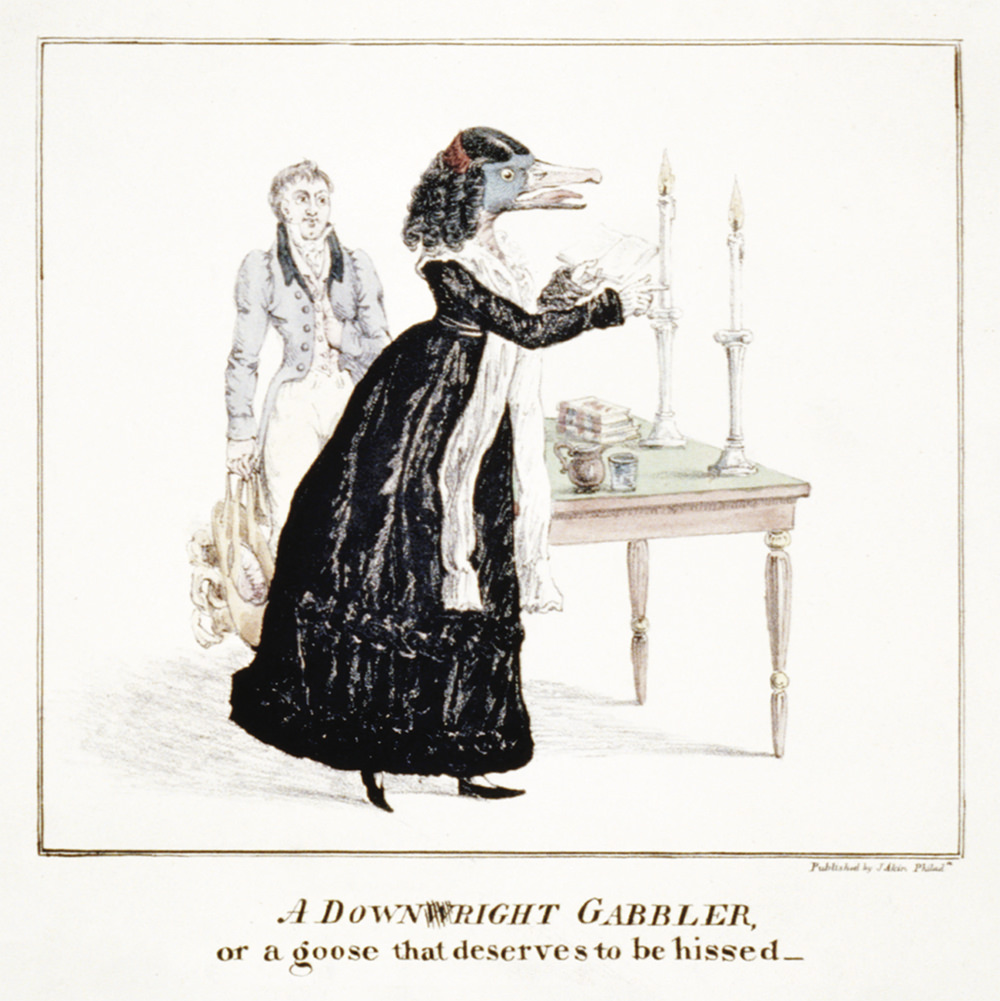
James Akin
A Downwright Gabbler, or a goose that deserves to be hissed,
1829
Library of Congress, Prints and Photographs Division, Washington, D.C.
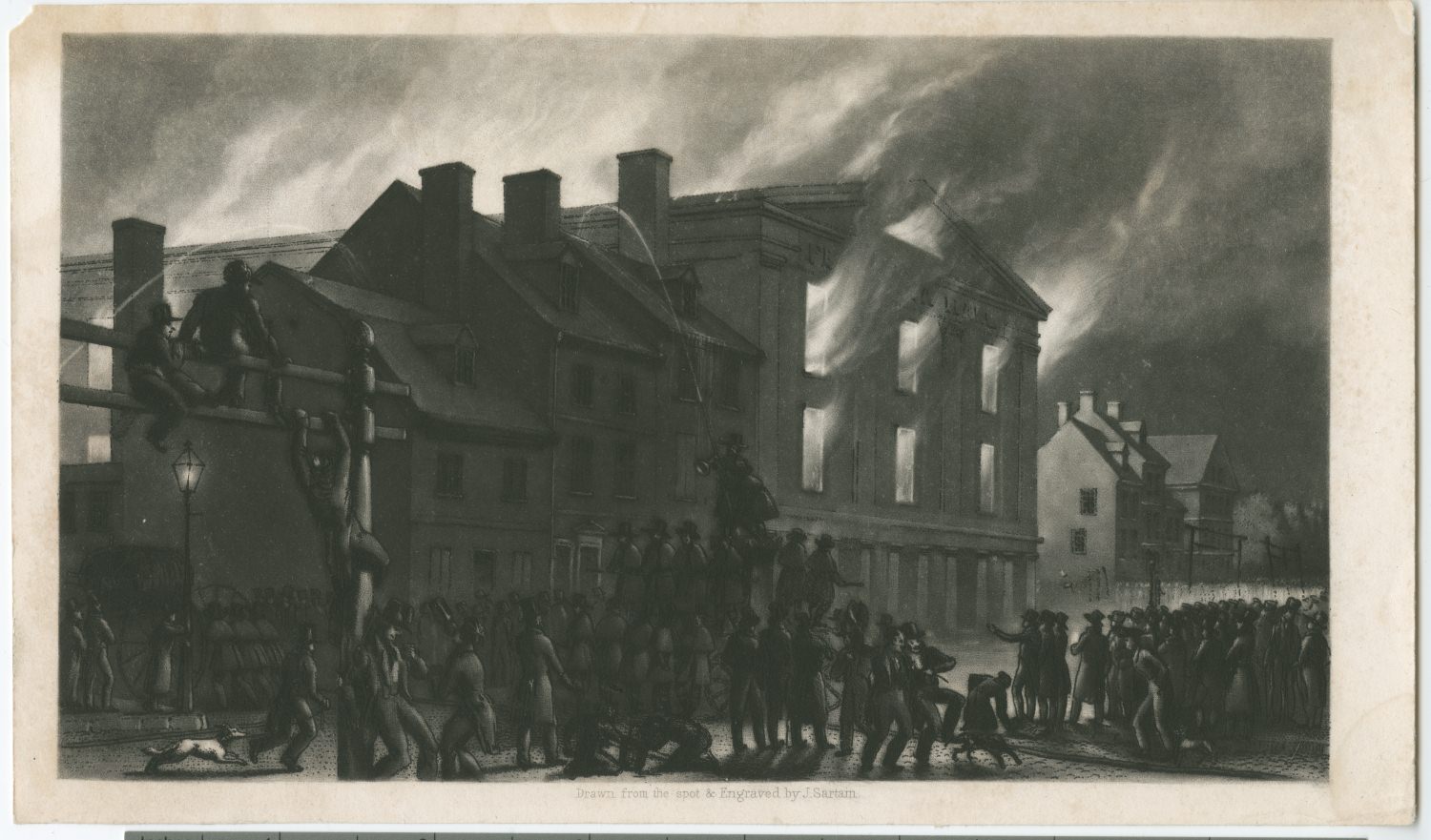
John Sartain
Destruction
of Pennsylvania Hall, 1838
Patricia D. Klingenstein Library, New-York
Historical Society
“Absolutely in the power of
her husband”
-Sarah Grimké
Women’s financial contributions were critical to the abolitionist movement. Yet their inequality under the law complicated fundraising efforts. Because married women were subject to coverture, a condition carried over from British colonial rule that gave husbands total control over their wives’ bodies, earnings, and property, not all American women could rely on ready access to cash. Some abolitionist accounts record women donating their rings instead, placing them in offering plates. In 1839, Mississippi became the first state to protect property that women brought into marriage: primarily, assets in enslaved African Americans. New York’s more expansive 1848 law safeguarded married women’s property, gifts, and bequests. Without such ownership rights, women were economically dependent and considered incapable of citizenship. Later that year, at the first women’s rights convention in Seneca Falls, NY, Elizabeth Cady Stanton recognized the passage of the Married Women’s Property Act as an important first step towards equality for women.
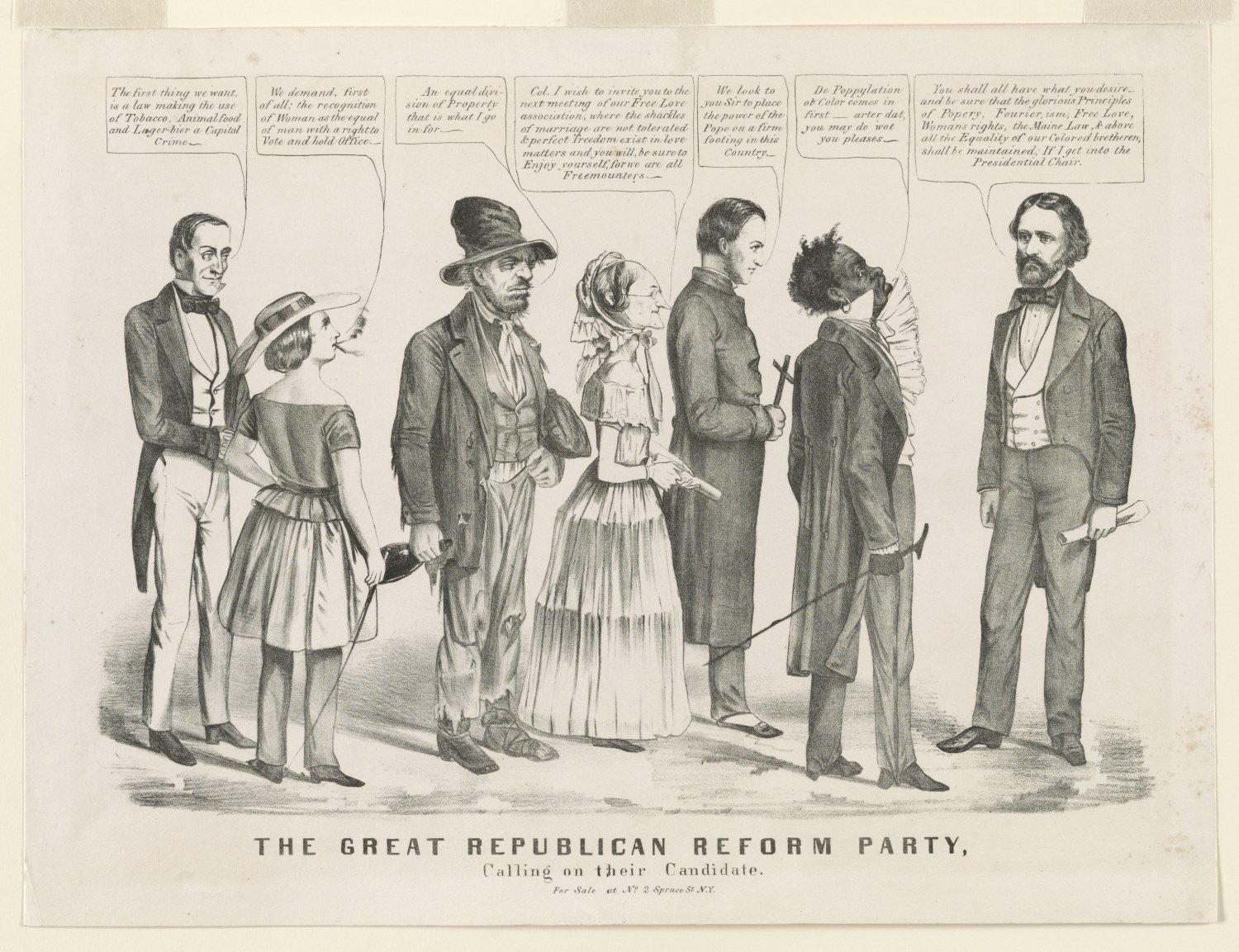
Attributed to Louis Maurer
The
Great Republican Reform Party
New York: Nathaniel Currier, 1856
Library of Congress, Prints and Photographs Division, Washington, D.C.
Although
some abolitionists refused to engage in politics, by the mid-1850s anti-slavery
and women’s rights activism led a growing number of women to partisan
positions. At the seventh National Woman’s Rights Convention in New York City,
Ernestine Rose argued that the fledgling Republican Party should support
suffrage, having courted women’s contributions during the 1856 presidential
election. Opponents mocked the suffragists as cigar-smoking, pants-wearing
extremists, lobbying the Republican candidate, John Frémont, alongside
caricatured advocates for temperance, free love, and racial equality.
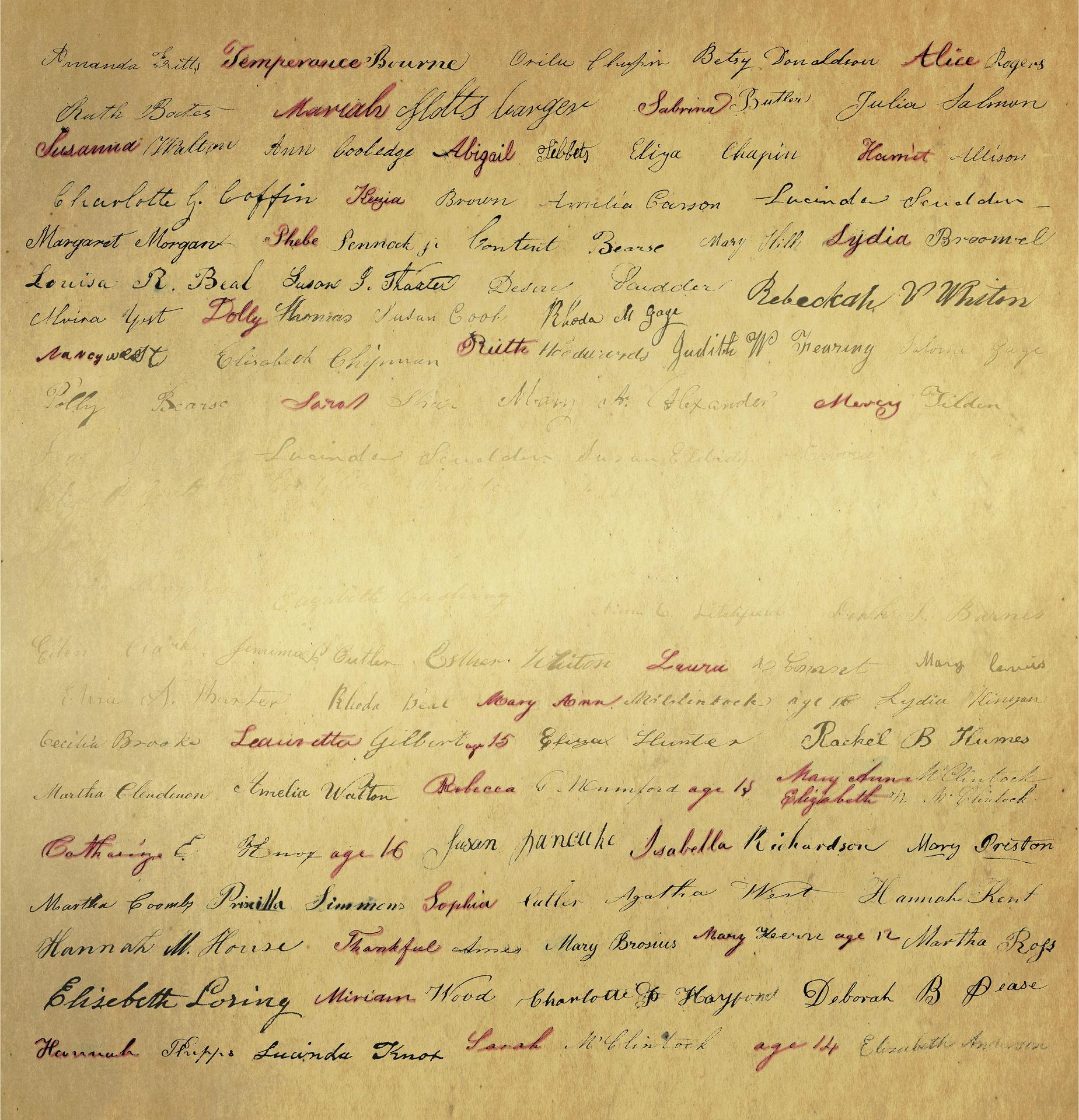
Petitions, 1835-38
Records of the 24th and 25th
Congress, National Archives
“The investigation of the rights of
the slave has led me to a better understanding of my own.”
- Angelina Grimké
Beginning in 1830, hundreds of thousands of women sought to influence national policy by petitioning Congress. Their signatures represented moral opposition to a number of pro-slavery policies: the Indian Removal Act, Texas annexation, the interstate slave trade, slavery in the District of Columbia, the Fugitive Slave Act, and the admission of slave states into the Union. The limited effectiveness of such moral appeals became clear in 1836, when the House of Representatives implemented a “gag rule” that automatically tabled all anti-slavery petitions without a hearing. This infuriated women who saw their First Amendment right to petition the government disregarded, intertwining abolitionism and women’s rights ever more closely. In her 1837 book Letters on the Equality of the Sexes, Sarah Grimké observed how, lacking political representation, “[woman] is only counted, like the slaves of the South, to swell the number of law-makers who form decrees for her government, with little reference to her benefit.”
Unidentified artist
“Have
Mercy Upon Us Miserable Sinners,”
Harper’s
Weekly
, October 31, 1857
Patricia D. Klingenstein Library, New-York
Historical Society
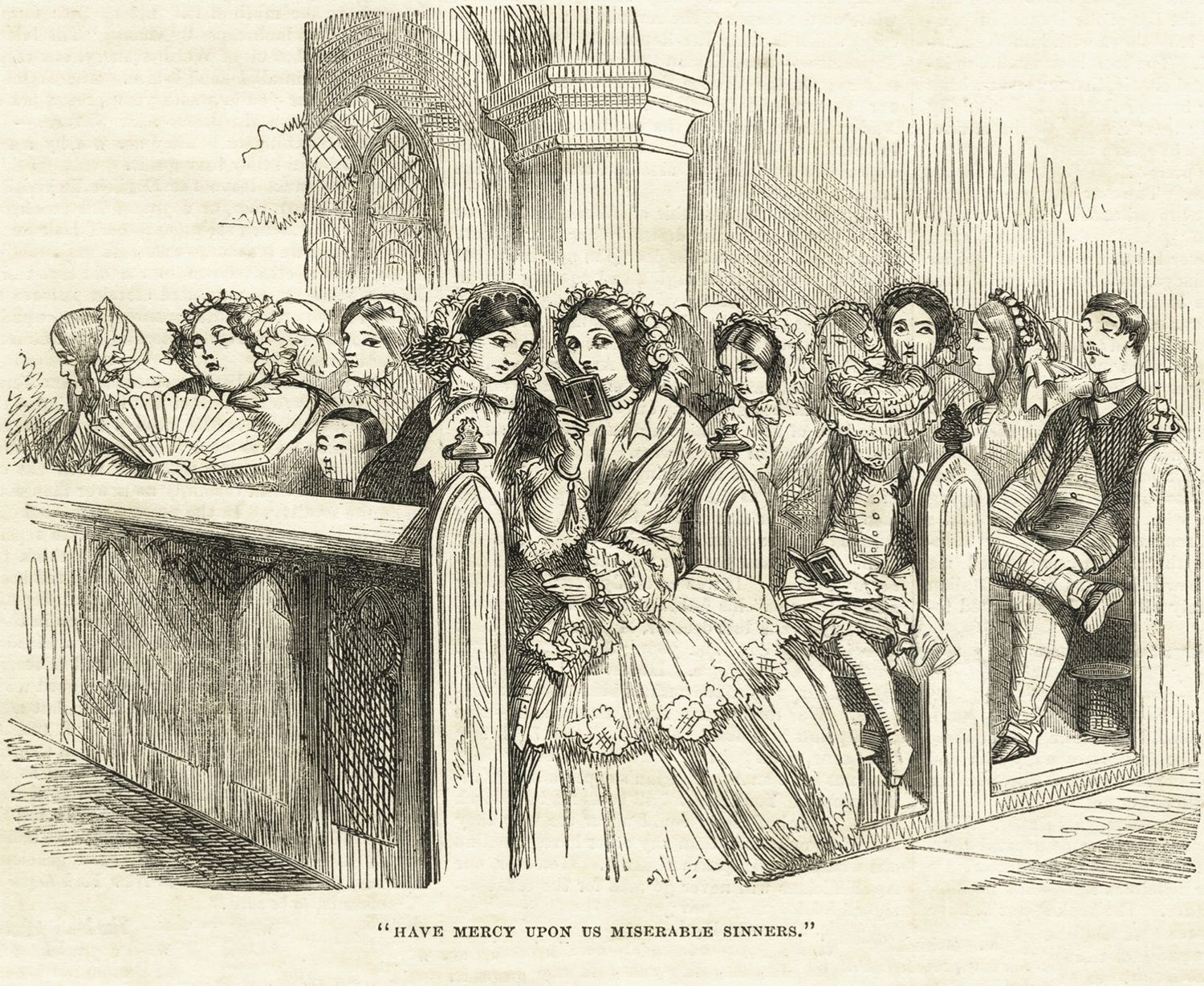
Unidentified maker
Ring, 19th century
Gold
Bequest of Mary E. Warner,
1948.12
Unidentified maker
Ring, 19th century
Gold
Gift of Isabella Vaché Cox, INV.12373
Unidentified maker
Ring, 19th century
Gold
New-York Historical Society,
INV.769p
Unidentified maker
Ring, 19th century
Gold
New-York Historical Society,
INV.769q
Unidentified maker
Ring, 19th century
Gold
New-York Historical Society, INV.12371
“In her hands lie the destinies
of the
Republic”
- James Spalding
In 1837, 71 delegates attended the first Anti-Slavery Convention of American Women, to coordinate nationwide activities. Angelina Grimké’s pamphlet, An Appeal to the Women of the Nominally Free States, emerged from this landmark event. Citing women’s Revolutionary-era boycott of British goods, Grimké called on Northern women to reject the products of slave labor. Meanwhile, some prominent activists, including William Lloyd Garrison, called for women’s equal participation in the American Anti-Slavery Society, the nation’s largest abolitionist organization. In 1840, four white women—Abby Kelley, Maria Chapman, Lydia M. Child, and Lucretia Mott—were elected officers, and the organization split. (Hester Lane, an African American woman, was nominated but not elected.) When the World Anti-Slavery Convention convened later in London, women delegates were not seated. Afterward, Lucretia Mott and Elizabeth Cady Stanton resolved to organize a national meeting advocating women’s rights—the seed of the 1848 convention in Seneca Falls. By 1860, ten national conventions on women's rights would be held in Massachusetts, Ohio, Pennsylvania, and New York.
“Too strong to be satisfied with
a dress, a
pudding, or a beau.”
-Ellen Munroe
Beginning in the mid-1820s, vast numbers of young unmarried women left home to work a variety of jobs in the nation’s growing cities and industries. Joined by an increasing population of immigrant women, many labored twelve hours a day (or more) in noisy, stuffy, and often dangerous conditions, while receiving less pay than their male counterparts. In Lowell, MA, a textile manufacturing center, unsuccessful “turn-outs,” or strikes, in 1834 and 1836 convinced the “factory girls” to organize. In 1845 the Lowell Female Labor Reform Association petitioned the Massachusetts Legislature to enact a ten-hour workday, leading to the first-ever state investigation of labor conditions. When the legislators refused to intervene, the LFLRA accused the Committee on Manufactures of “cringing servility to corporate monopolies.” The women campaigned against Committee Chairman William Schouler, calling him “unworthy of a seat in the halls of legislation” and contributing to his electoral defeat.
The Voice of Industry,
August 14,
1847
Wisconsin
Historical Society Library
The Lowell Female Labor Reform Association provided
key financial support for The Voice of
Industry, a regional newspaper. Sarah Bagley, then President of the LFLRA,
joined the Voice Publishing Committee
in 1845, and the weekly became a vocal advocate for equal pay and married
women’s rights. Ten years later, Massachusetts became one of the first states to pass a law protecting
married women’s wages, which had previously been her husband’s property.
